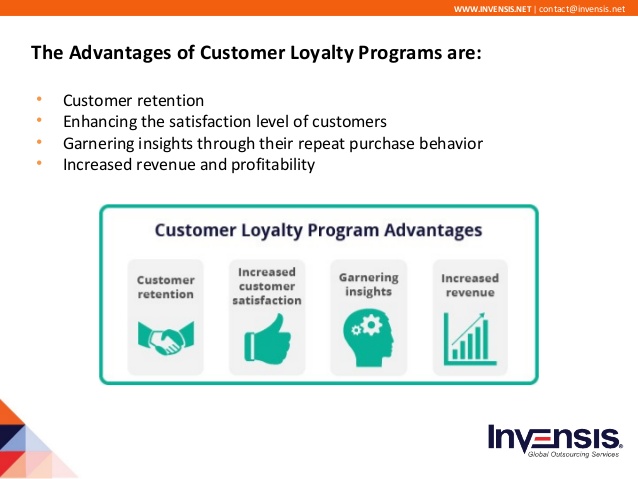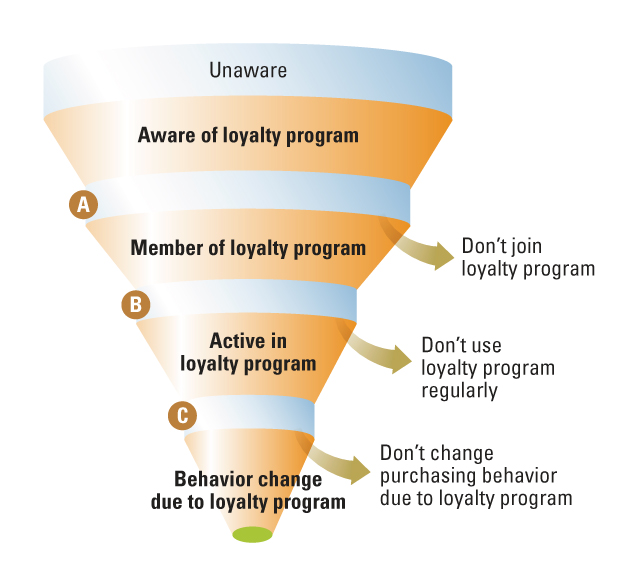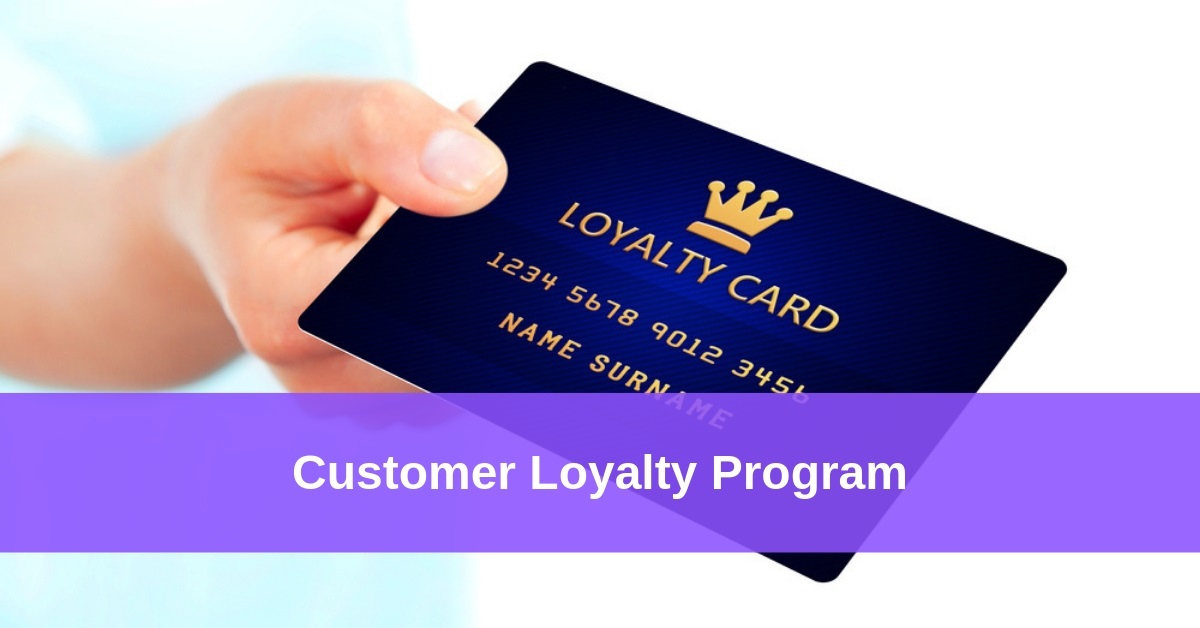All Categories
Featured
Table of Contents
In 53066, Taniyah Graham and Christopher Sutton Learned About Mobile App

What if you could grow your company without increasing your spending? In reality, what if you could actually lower your costs but increase your sales, every year? Would you do it? If you're a company owner, then you'll likely give a resounding 'yes', an easy response to an even simpler concern.
A rewards program tracks and rewards certain spending habits by the customer, providing special benefits to devoted customers who continue to shop with a specific brand. The more that the customer invests in the shop, the more advantages they get. Over time, this incentive constructs devoted clients out of an existing customer base.

Even if you currently have a reward program in location, it's a good concept to dig in and fully understand what makes client commitment programs work, in addition to how to carry out one that costs you little money and time. Don't fret, I'll assist you with that. I'll break down the primary benefits of a loyalty program and the finest methods to develop loyal consumers.
Let's dig in. Client commitment is when a client returns to do business with your brand over your rivals and is mainly affected by the positive experiences that the client has with your brand. The more favorable the experience, the most likely they will return to shop with you. Consumer commitment is exceptionally crucial to businesses because it will assist you grow your company and sales faster than a simple marketing strategy that focuses on recruiting brand-new customers alone.
A couple of methods to measure customer loyalty consist of:. NPS tools either send out a brand efficiency survey through email or ask customers for feedback while they are checking out a business's website. This details can then be used to much better understand the possibility of client loyalty. A repurchase ratio measures the ratio of repeat buyers versus one-time buyers.
Client loyalty index (CLI). The CLI tracks customer commitment over time and is comparable to an NPS study. However, it considers a couple of extra aspects on top of NPS like upselling and buying. These metrics are then used to assess brand commitment. A customer commitment program is a marketing strategy that rewards customers who make purchases and engage with the brand on an ongoing basis.
Client rewards programs are developed to incentivize future purchases. This motivates them to continue doing business with your brand. Client commitment programs can be established in various ways. A popular client commitment program benefits clients through a points system, which can then be invested in future purchases. Another kind of consumer loyalty program might reward them with member-exclusive advantages or complimentary presents, or it may even reward them by contributing money to a charity that you and your clients are equally passionate about.
In 18901, Triston Pace and Leilani Key Learned About Online Community
By providing benefits to your customers for being faithful and supportive, you'll construct a connection with them, deepening their relationship with your brand and hopefully making it less likely for them to change to a rival. You've most likely seen consumer loyalty programs in your own shopping experience, whether at your favorite cafes or your most frequented supermarket.
But simply due to the fact that everybody is doing it doesn't suggest that's a sufficient factor for you to do it too. The much better you understand the advantages of a client rewards program, the more clearness you will have as you develop one for your own store. You won't be distracted by exciting advantages and complex commitment points systems.
Keep in mind: work smarter, not harder. Customer retention is the main advantage of a rewards program that works as a structure to all of the other advantages. As you offer rewards for your existing consumer base to continue to buy from your store, you will provide your store with a stable circulation of cash month after month.
By growing your retention rate, you can stop investing as much time or money on increasing your total number of clients. Why is this important? Devoted customers have a greater conversion rate than brand-new clients, implying they are more most likely to make a deal when they visit your shop than a brand-new customer.
By increasing your retention rate by only 5 percent, you can increase your revenues by 25 percent and as much as by 95 percent. Needless to say, your retention rate matters. Key Takeaway: If you wish to significantly increase your earnings, provide rewards for your existing clients to continue to shop at your shop.
And you won't have to spend cash on marketing to get them there. Consumer acquisition (aka generating new customers) takes a great deal of effort and money to convince complete strangers to trust your brand name, concerned your store, and try your items. In the end, any cash made by this brand-new consumer is overshadowed by all of the cash invested on getting them there.
Key Takeaway: If you wish to lower costs, concentrate on customer retention instead of customer acquisition. When you concentrate on supplying a favorable customized experience for your existing customers, they will naturally inform their loved ones about your brand name. And with each subsequent transaction, faithful customers will tell much more people per deal.
In 44870, Carolyn Mcneil and Aspen Lin Learned About Gift Guides
The finest part? Due to the fact that these new clients came from relied on sources, they are most likely to become loyal consumers themselves, investing more on average than brand-new consumers generated by other marketing efforts. The Chase Ultimate Benefits program, for instance, provides significant benefits for individuals who take a trip a lot.
The 'ultimate benefits' that Chase cardholders receive include 2x points per dollar invested in all travel purchases in addition to primary rental car insurance, no foreign deal charges, journey cancellation insurance coverage, and purchase defense. For individuals who travel a lotand have disposable income to do sothere is a massive incentive to spend money through the ultimate rewards program.
This entire process makes redeeming benefits something worth bragging about, which is precisely what lots of cardholders end up doing. And to assist them do it, Chase uses a benefit for that too. Secret Takeaway: Make it easy for your clients to brag about you and they will get the word out about your shop for free.
As soon as you get the basics down, then using a loyalty rewards app can help take care of the technical information. Here are the steps to get going with creating your client loyalty program. No consumer wants to purchase products they do not want or need. The same goes for your commitment program.
And the only method to customize an irresistible customer loyalty program is by totally knowing your consumer base. The best method to do this? By implementing these methods: Build consumer contact information any place possible. Guarantee your business is continuously building a detailed contact list that permits you to gain access to existing customers as often and as easily as possible.

Track customer habits. Know what your customers desire and when they desire it. In doing so, you can anticipate their desires and requires and provide them with a commitment program that will please them. Classify client personal qualities and preferences. Take a multi-faceted method, do not limit your loyalty program to simply one opportunity of success.
Motivate social networks engagement. Frame methods to engage with your clients and target audience on social networks. They will soon provide you with very insightful feedback on your services and products, enabling you to much better comprehend what they anticipate from your brand. Once you have exercised who your customers are and why they are doing service with your brand, it's time to choose which kind of loyalty benefits program will encourage them to stay devoted to you.
In Wausau, WI, Guadalupe Mccarty and Nataly Sutton Learned About Emotional Response
However, the most typical customer loyalty programs centralize around these main principles: The points program. This kind of program focuses on gratifying customers for every purchase they make with points in a point system. These points can then either be utilized on future purchases or put towards some form of benefit.
The paid program. This type of program needs clients to pay a one-time or yearly charge to join your VIP list. Loyalty members who belong to this list are able to access special benefits or member-exclusive benefits. The charity program. This kind of program is a bit different than the others.
This is attained by motivating them to do organization with the brand name and, in return, their loyalty will be rewarded with a contribution to a charity. The tier program. This kind of program concentrates on increasing levels of brand name commitment. The more loyal a customer is to a brand, the greater tier they will climb up to and the better the benefits they will get.
This kind of program is simply as it sounds, where one brand partners with another brand name to supply their collective audiences with exclusive member discount rates or offers that they can redeem while working with either brand. The community program. This type of program incentivizes brand commitment by supplying its members with access to a like-minded community of individuals.
This kind of program is relatively similar to paid programs, nevertheless, the membership cost takes place on a regular basis instead of a one-time payment. Next, choose which consumer interactions you wish to reward. Base these benefits around which interactions benefit your company the a lot of. For instance, to help your organization out, you can offer action-based rewards like these: Reward clients more when doing service with your brand name throughout a slow duration of the year or on an infamously sluggish day of organization.
Reward customers for engaging with your brand on social networks. Incentivize specific items you are trying to move rapidly. Incentivize purchases that are over a certain dollar amount. The concept is to make your consumer commitment program as easy as possible for your customers to utilize. If your customer commitment program isn't staff friendly, isn't simple to track, is too pricey to run, or isn't easy for your clients to use or understand, then staff and clients alike probably won't take benefit of it.
To get rid of these barriers to entry, consider integrating a consumer loyalty software application that will assist you keep top of all of these elements of your program. Some quality customer program software application consist of:. CandyBar is a digital punch card program. It works by tracking your customer's purchases through an app on a computer, phone, or tablet.
In 46368, Judah Meyers and Keaton Valencia Learned About Type Of Content
Loyalty members can then inspect their benefits through text message and business owners can use the program to contact their customers. Yotpo. Yotpo is a cloud-based customer commitment platform exclusively for eCommerce businesses. This software application is particularly good at gathering every type of user-generated content, valuable for customizing a much better client experience.
Loopy Commitment is an useful consumer commitment software application for businesses that mainly use Google Wallet or Apple Pay as their payment platforms. The software application produces a digital commitment card that sends push notices to their clients' phones when they remain in close distance to their physical store. When you have actually made the effort to decide which consumer loyalty strategies you are going to implement, it's time to start promoting and signing up your first loyalty members.
Use in-store ads, integrate call-to-actions on your site, send promos by means of e-mail newsletters, or upload promotional posts on social media to get your customers to sign up with. It is necessary to understand the primary advantages of a customer rewards program so that you can produce a tailored experience for both you and your customer.
Believe about it. You know what kinds of items your customers like to purchase but do you understand what brings them back, day after day, week after week? What makes them select your store over the store across the street? What makes them your client and not the customer of your greatest competitor? Remarkably, the responses to these questions don't boil down to discount rate costs or quality items.
Latest Posts
Web Design - Wikipedia Tips and Tricks:
Siteinspire - Web Design Inspiration Tips and Tricks:
Web Design And Applications - W3c Tips and Tricks: